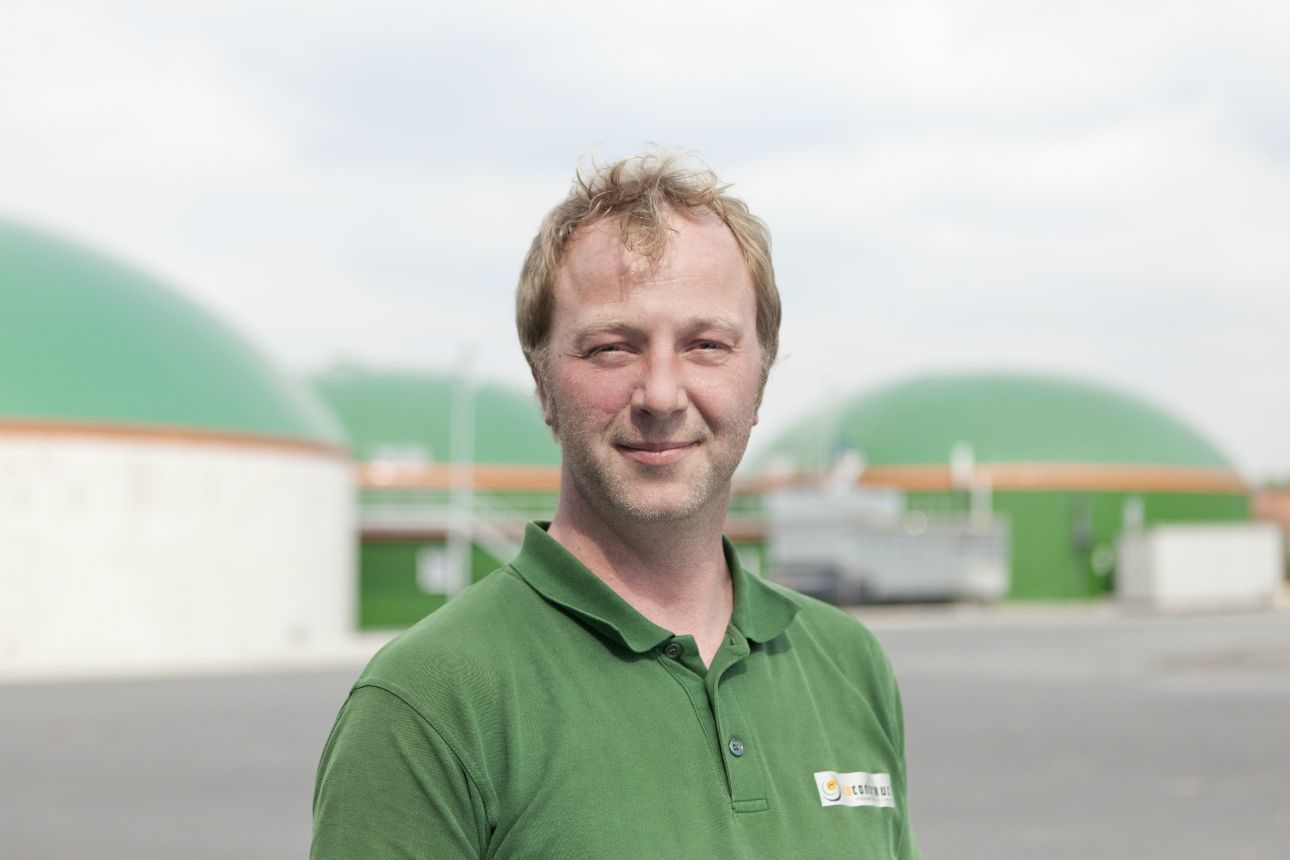Magic Word
On an otherwise quiet morning in the in a small town in western Germany, the two cogeneration units installed at the Center for Agricultural Technology in the town of Melle are running at full capacity, which creates quite a din behind the strong concrete walls of the engine room. At a biogas plant, the noise is a good sign.
Table of Contents

“We’ve switched to peak load operation,” plant operator Dirk Meyerdrees explains, “and right now we are operating at full tilt!” A few hours later, a sudden silence takes over the room as the engines stop producing power. It is rare that you don’t need ear protection in the engine room of a biogas plant. “Peak load operation means we produce power when demand and prices are right,” Meyerdrees says. “But right now, it is more profitable for us to stop the engines and store the biogas that is still being produced in the fermenter. As soon as prices rise again, we’ll start our engines and produce as much power as we can, using the stored biogas.”
The objective of peak load operation is twofold. For starters, operators are always on the lookout for ways to increase earnings so they have enough money on hand to cover maintenance and repowering. Making financial matters even more complicated are the ever-increasing prices of the organic raw materials needed to produce biogas. As a result, new sources of income such as peak load operation are always welcome. By increasing power production during periods of high demand with higher prices, more income can be derived without increasing the amount of raw materials. The second objective of peak load operation is related to the ability of transmission grids to transport the power produced at biogas and other types of power plants. As soon as operators switch to peak load operation, the grid is relieved of frequency which reduces the danger of blackouts.
Next Kraftwerke is the link between operators like Meyerdrees and the energy exchange where prices are set. Each week, Meyerdrees receives an operational schedule for his biogas plant from Next Kraftwerke. This allows him to beat the average market price on the energy exchange. “This has worked well in the first two months since we began operating during peak load times,” Meyerdrees confirms. The provision of balancing energy is another income stream. Meyerdrees’ plant is switched off by a remote control unit in times of an electricity overload in the grid. In combination with peak load operation, biogas plant operators can therefore provide optimal support for the grid. They help solve the problem of integrating renewable energies into existing market and grid structures. Here, flexibility is the magic word.
Facts & Figures
| Capacity 2 on-site CHP: | in total 340 kW |
| Capacity 2 off-site CHP: | in total 740 kW |
| Gas storage capacity: | 2 x 741 m³, max. 3 hours |
| Partner website: | More about our project partner Krukum (ATZ) |
| Applied products: | Balancing energy, Market Premium Model, Peak load operation |
More Information and Services


